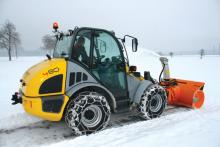
Too many drivers are unaware that ABS systems can be ineffective in snowy or icy conditions. Old-fashioned driving techniques such as cadence braking are not always taught these days, but are important to know. Coping with a skid correctly can make the difference between having a crash and avoiding one. If a skid happens, steer into it. Not everyone is lucky enough to have a session on a skid pan to practice controlling skids. But drivers do need to try and understand the causes of skidding, which can prevent this from happening in the first place. A basic knowledge of the laws of physics can help. It is of note how many drivers seem unaware that continuing to drive at speed or braking or steering harshly can initiate a loss of control, particularly in poor conditions. Knowing what a coefficient of friction is and how it relates to driving is important. Perhaps one of the simplest points to remember about winter driving is; just back off the gas.
Some simple measures are highly recommended. If a vehicle’s windows are covered in frost or snow, clear these properly before driving. This is a legal requirement in many or even most countries and saying, “I didn’t know,” to a traffic officer is not a sufficient excuse. Meanwhile, leaving a vehicle unattended with the engine running to warm it up is at best, unwise in urban areas, and is also an offence in some countries. If snow is piled on top of a vehicle, clear this off as well. Failing to do so will present a hazard to yourself and other road users and once again, is an offence in some countries.
In some northern countries studded tyres may be a requirement, while in others winter tyres may be necessary. These do offer considerably better traction in poor conditions but studded tyres are not allowed in many areas due to the additional road wear they can cause.
As with snow and ice on the road, poor visibility due to heavy snowfalls or fog can obscure visibility. Vehicles have lighting intended to improve conspicuity, so drivers need to do simple research and find out what settings in each vehicle best suits the conditions. And as with snow or ice-covered roads, simply slowing down when visibility is poor can reduce road risks considerably.
It should not be surprising that many of the ways in which road users can reduce their risks when driving in poor conditions are simple common sense.







